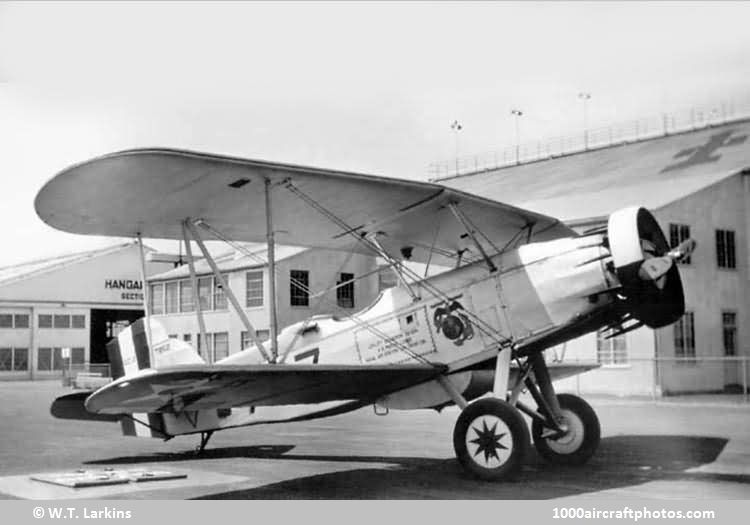11/15/2014. Remarks by Johan Visschedijk: "The two-seat Falcon series originated in 1923 as the Curtiss entry in a formal USAAC fly-off competition for new observation designs powered with the wartime Liberty engine. While the development and production life of the Falcon paralleled that of the Hawk, it is one of the forgotten aeroplanes of history, due mostly to the fact that it was a workhorse two-seater and did not have the glamour of the fighters. Actually, nearly as many Falcons were built for the US Armed Forces as Hawks: 170 for the USAAC, 27 for the USN, 21 civil, plus undetermined export models. In 1933, the venerable Falcon was unique in being the only 1923 design still in production in the US. The 27 USN aircraft were designated as follows.
XF8C-1 (Model 37D). Two XF8C-1s, BuNos. A-7671, A-7672, were general-purpose models combining the features of the USAAC XO-12 and XA-4 Falcons. Fitted with bomb racks and the extra wing guns (bringing the total to six) of the A-3, they were given a fighter designation because the USN, which purchased them for the USMC, did not have an attack designation at the time. Powered by a 425 hp Pratt & Whitney R-1340 Wasp, and with a gross weight of 3,918 lb (1,777 kg), maximum speed was 137 mph (220 kmh) and service ceiling 17,300 ft (5,273 m). The type soon dropped its experimental status and became F8C-1, shortly thereafter being redesignated OC-1 as an observation type. Delivered in February 1928, BuNo. A-7671 saw service with the USMC observation squadron VO-10M in China and with VO-8M on the US West Coast. BuNo. A-7672 was only briefly designated OC-1, before becoming the XOC-3 in October 1930.
F8C-1. Four production versions of the XF8C-1s for the USMC. These were redesignated OC-1s soon after delivery in January 1928. Navy BuNos. A-7945 to A-7948.
F8C-3. Under BuNos. A-7949 to A-7969, 21 later versions of the XF8C-1s were delivered from February to April 1928. Additional military equipment increased gross weight to 4,175 lb (1,894 kg), decreased maximum speed to 136 mph (219 kmh), and service ceiling to 16,400 ft (4,999 m). They were soon redesignated OC-2s.
OC-1. The four production F8C-1s and the two XF8C-1 prototypes redesignated as observation aircraft. The last one, BuNo. A-7947, was surveyed in April 1935.
OC-2. The 21 production F8C-3s redesignated. The last OC-2, BuNo. A-7952, was scrapped in October 1935, with 2,511 flying hours.
XOC-3. The second XF8C-1, BuNo. A-7672, was redesignated XOC-3 for test of a 600 hp Curtiss Chieftain engine installation similar to that of the USAAC XO-18. The fuselage was rounded out with stringers in the manner of the XO-16 to match the engine cowling. It was struck off charge in April 1932.
The pictured aircraft was coded 7-J-7 and shows an unusual placement of the USMC emblem far forward on the fuselage, and non-standard wheel design."
